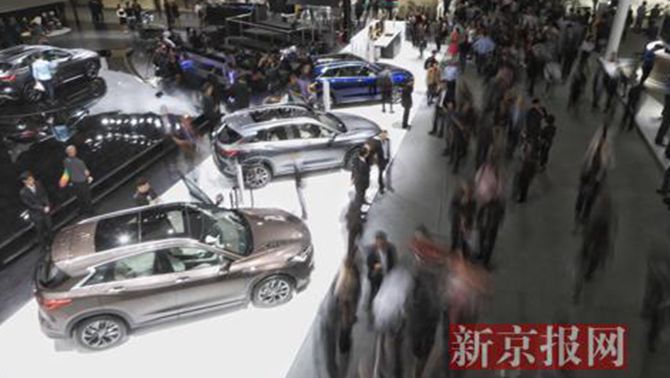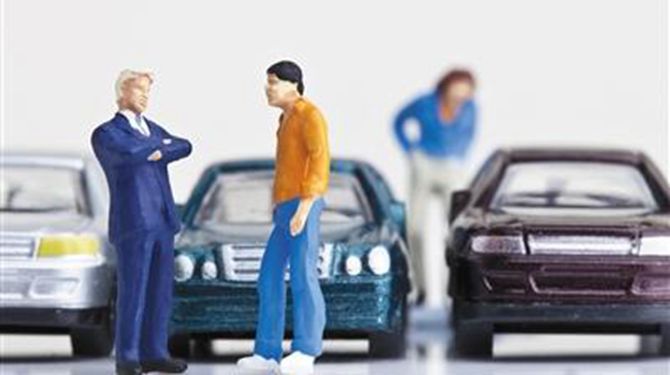Car to the Countryside "Restart after 10 years, will buying a car become standard for villagers?

▲ Picture/Beijing News Network
Recently, the National Development and Reform Commission and 10 other departments jointly issued the "Implementation Plan for Further Optimizing Supply to Promote Steady Consumption Growth and Promote the Formation of a Strong Domestic Market (2019) ". With the improvement of living standards, cars have become the largest consumption of Chinese people. Therefore, the first item in the "Plan" is to "take multiple measures to promote automobile consumption and better meet the travel needs of residents."
It is worth noting that the plan also specifically mentions "promoting the replacement of rural vehicles".
Rural areas are entering the threshold of explosive popularity of automobiles
To some extent, this can be understood as a restart of the "car to the countryside" policy to promote car consumption in rural areas. As early as 10 years ago, in January 2009, the "Plan for Adjustment and Revitalization of the Automobile Industry" announced by the State Council proposed a policy to benefit farmers: between March 1 and December 31, 2009, the purchase of 1.3 liters and below, and the scrapping of three-wheeled vehicles or low-speed trucks for light trucks, a one-time financial subsidy will be given.
It is also reminiscent of home appliances going to the countryside a decade ago. Home appliances going to the countryside is a fiscal policy rescue plan announced by the Chinese government in December 2008 to combat the sharp decline in export demand for consumer electronics caused by the global financial crisis and expand the domestic market.
"Home Appliances to the Countryside" provides farmers with the purchase of four types of products, including color TVs, refrigerators, mobile phones and washing machines. Subsidies are given at 13% of the product price, and the maximum subsidy is 2,000 yuan for TVs, 2,500 yuan for refrigerators, 2,000 yuan for mobile phones and 1,000 yuan for washing machines. Home appliances to the countryside have achieved remarkable results, achieving benefits for farmers, markets for enterprises, and the state has achieved the effect of boosting domestic demand.
At present, the international economic situation is complicated, and China’s exports are facing certain pressure. At this time, the huge domestic demand market has become a valuable strategic depth of China’s economy. At present, consumption has become the most important driver of the troika driving the economy, and the huge "five ring external market" also contains huge consumption power. Utilizing and activating this strategic depth is a necessary move for China’s economic development.
Economic policy is about following the trend, and the external conditions for cars to go to the countryside are mature. According to the laws of the general market, when the per capita GDP is between 800 and 3,000 US dollars, the market demand for cars rises rapidly, and the per capita car ownership also increases significantly. Experts from the China Machinery Industry Federation say that when the per capita GDP reaches 1,000 US dollars, cars begin to enter households. When the per capita GDP reaches 3,000 US dollars, private car purchases will experience explosive growth.
The explosive growth of Chinese automobiles appeared in 2008. From 2008 to 2010, the compound growth rate of automobile sales in our country was 38.77%. In 2009, the cumulative sales of automobiles in our country’s automobile market 13.6448 million, an increase of 45.46% year-on-year, making it the world’s largest automobile sales market. In 2010, the cumulative sales of automobiles 18.0619 million, an increase of 32.37% year-on-year. China’s per capita GDP in 2008 was 24,100 yuan, which basically met the threshold of 3,000 US dollars per capita for automobile popularization.
However, China does not have separate statistics on the per capita GDP of rural areas, so we need to find another data. There is another rule in the popularity of cars, that is, the R value, that is, the price of cars/per capita income. When this R value is close to 3, cars become popular.
In 2008, when the threshold of 3,000 US dollars was entered and China’s automobile industry broke out, the per capita income of Chinese cities and towns was 15,781 yuan. Considering the differences in China’s regional development and the high Gini coefficient, the income of first-tier cities will be higher. In 2008, the per capita salary in Beijing was about 45,000 yuan. At that time, a car was calculated at 150,000 yuan, which just entered the threshold of R value equal to 3.
With this R value, it is not difficult to infer that rural areas are now entering the threshold of explosive popularity of automobiles. On December 30, 2018, Minister of Agriculture and Rural Affairs Han Zhangfu revealed at the meeting that the development of agriculture and rural areas in 2018 has made steady progress, and the per capita net income of farmers has continued to grow rapidly, which is expected to exceed 14,600 yuan. Considering that farmers work abroad and send their income back, this income will further increase. At the same time as farmers’ income increases, thanks to the increasing localization, car prices are also falling. Domestic brand cars like Haval and Geely are of high quality and low price, starting from 50,000 yuan. China’s rural income has crossed the border of R value equal to 3.
To some extent, the countryside needs cars more than the cities. The rural population is more dispersed, public transportation is underdeveloped, and some places can be said to have no public transportation. So farmers’ demand for cars is more rigid. At the same time, with the deepening of new rural construction, the road conditions in rural China have improved, and they are no longer the muddy roads of the past. There are no restrictions on parking in rural areas, and the consumption of cars is reduced by a large amount.

▲ Picture/Beijing News Network
It can be seen that various factors are already in place, and the popularity of automobiles in rural China is entering the threshold of explosive growth.
Driving cars to the countryside will transform rural lifestyles
It is worth noting that rural car consumption has its own characteristics, that is, the balance of life and production. This makes pickup trucks likely to become a popular model for farmers. At present, many places have implemented restrictions on pickup trucks, which will undoubtedly curb farmers’ desire to buy.
Therefore, the "Plan" also proposes to steadily relax the scope of restrictions on pickup trucks entering cities. On the basis of evaluating the effect of the pilot policy of liberalizing the restrictions on pickup trucks entering cities in six provinces and regions of Hebei, Liaoning, Henan, Yunnan, Hubei and Xinjiang, we will steadily and orderly expand the scope of restrictions on pickup trucks entering cities. Obviously, increasing the use scenarios of pickup trucks is conducive to improving car consumption in rural areas.
The entry of cars into the countryside will also change the way of life in the countryside. Cars need roads, and the price of road construction is not cheap, which means that in a village, in order to share the road, the living will become more and more concentrated. And public facilities such as road construction require local residents to negotiate the construction and maintenance of the road together.
In addition, with the increase of rural cars and relatively underdeveloped road facilities, traffic jams in townships and counties will occur more frequently. In fact, traffic jams during the Spring Festival have now shifted from cities to townships. This all requires an improvement in awareness of rules. Of course, some negatives will inevitably appear. Rural areas are a real-world friends society, and the comparison is more serious. In the past, it was a comparison of houses, but now the goal of comparison may be placed on cars. These problems need to be confronted and solved in sequence.
But it is foreseeable that the "car to the countryside" will restart in 10 years, which is indeed expected to leverage the rapid growth of the rural automobile market.
Liu Yuanju (Researcher, Shanghai Institute of Finance and Law)